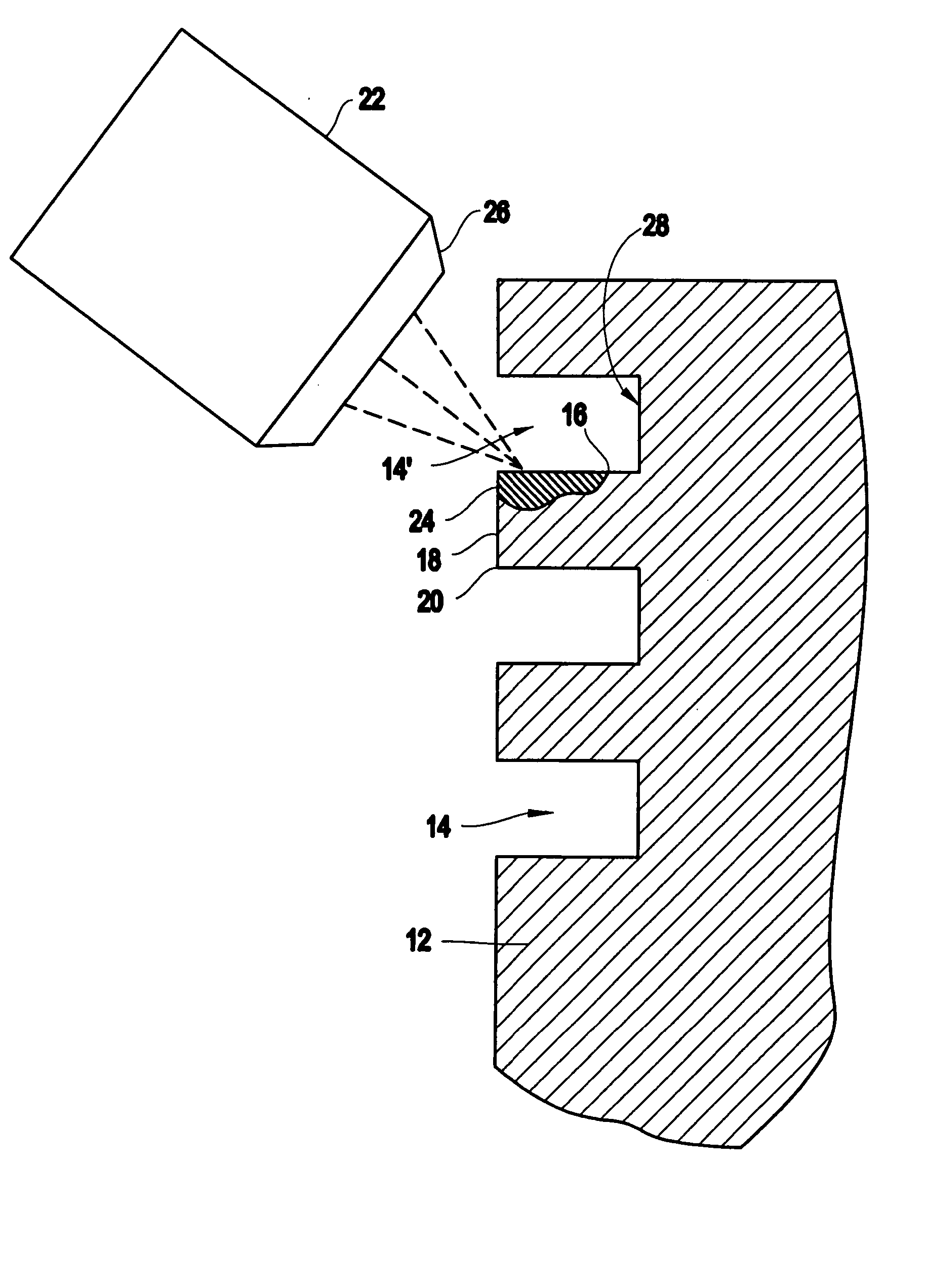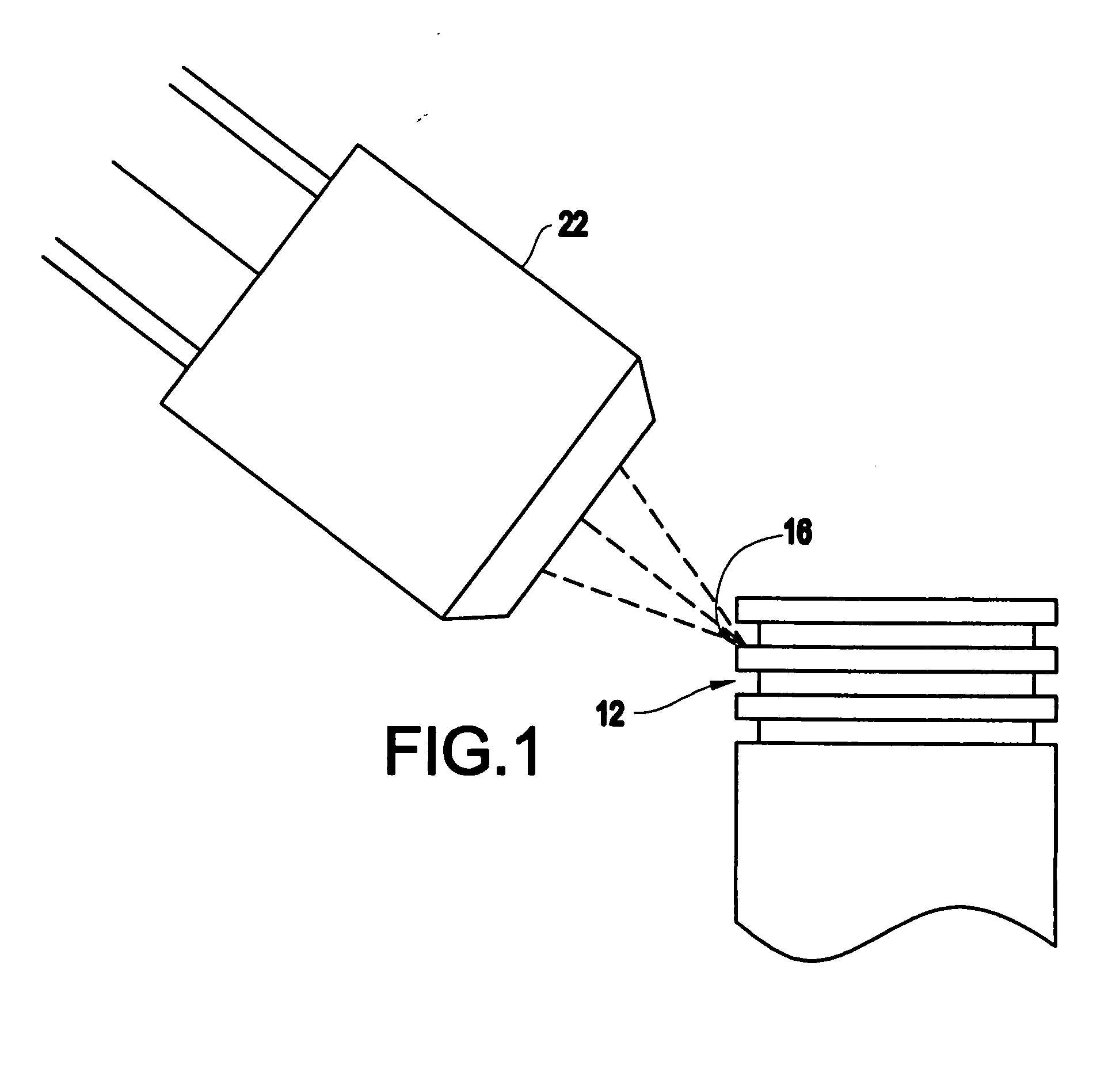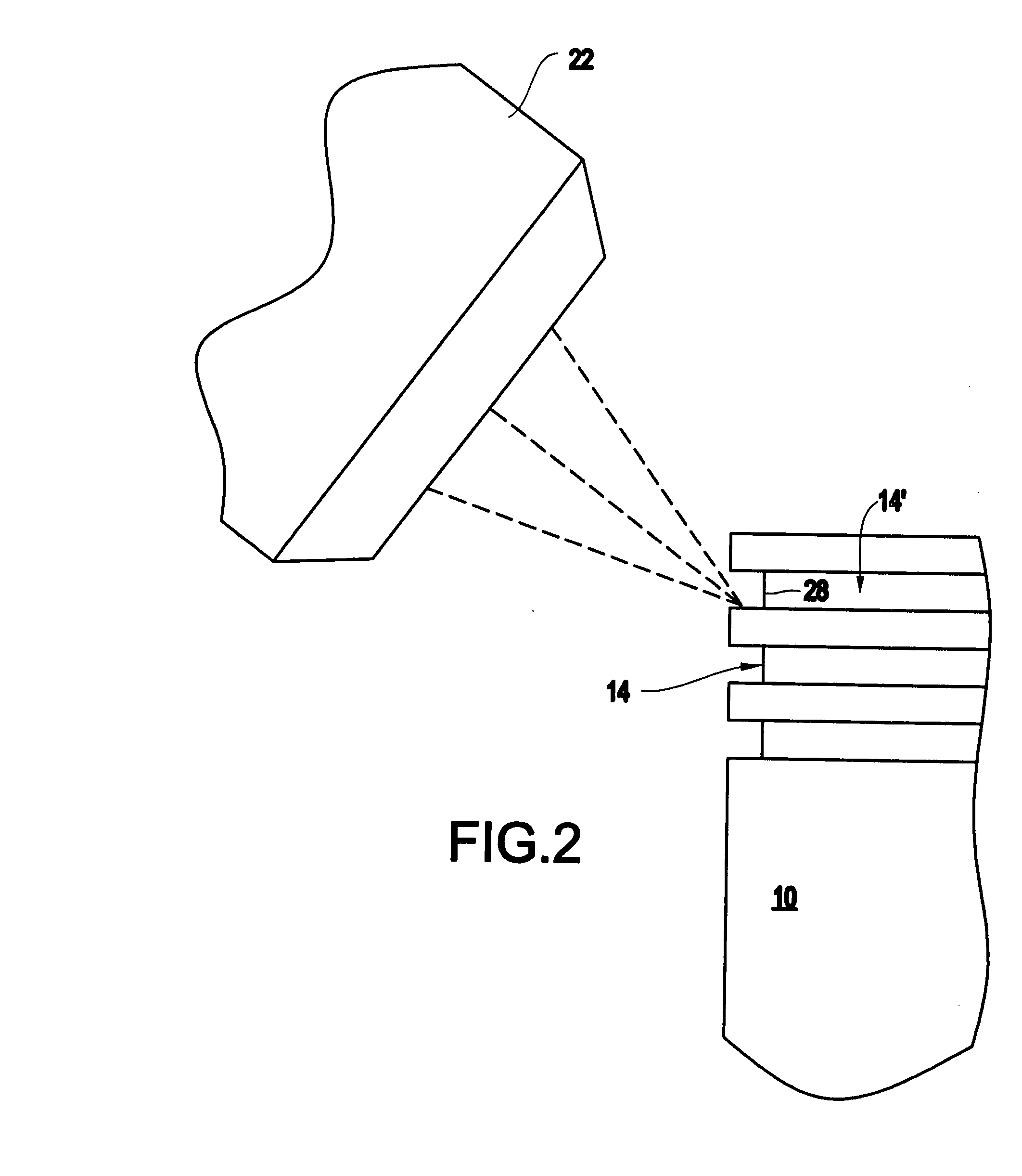Piston having diode laser hardened primary compression ring groove and method of making the same
- Summary
- Abstract
- Description
- Claims
- Application Information
AI Technical Summary
Benefits of technology
Problems solved by technology
Method used
Image
Examples
Embodiment Construction
[0038] Referring now to the drawings, and more particularly to FIGS. 1-11, there are shown exemplary embodiments of the method and structures according to the present invention.
[0039] Referring now to the drawings in greater detail, there is illustrated therein a piston having a laser hardened primary compression ring groove bottom surface defining land, the piston being generally referred to by the reference numeral 10.
[0040] As shown in FIGS. 1-3, the piston 10 includes a head portion 12 which has a plurality of circumferential piston ring grooves 14 therein, a primary one of which is labeled 14′.
[0041] This primary groove 14′ has a bottom surface 16 which is defined by a primary land 18, the land 18 having chamfered outer corners 20.
[0042] Presently, the area of the piston head 12 incorporating this primary compression ring groove 14′ is hardened by the process of induction. Such induction hardening causes a brittleness and distortion of the metal material, leading to crackin...
PUM
| Property | Measurement | Unit |
|---|---|---|
| Time | aaaaa | aaaaa |
| Area | aaaaa | aaaaa |
Abstract
Description
Claims
Application Information
 Login to View More
Login to View More - R&D
- Intellectual Property
- Life Sciences
- Materials
- Tech Scout
- Unparalleled Data Quality
- Higher Quality Content
- 60% Fewer Hallucinations
Browse by: Latest US Patents, China's latest patents, Technical Efficacy Thesaurus, Application Domain, Technology Topic, Popular Technical Reports.
© 2025 PatSnap. All rights reserved.Legal|Privacy policy|Modern Slavery Act Transparency Statement|Sitemap|About US| Contact US: help@patsnap.com



